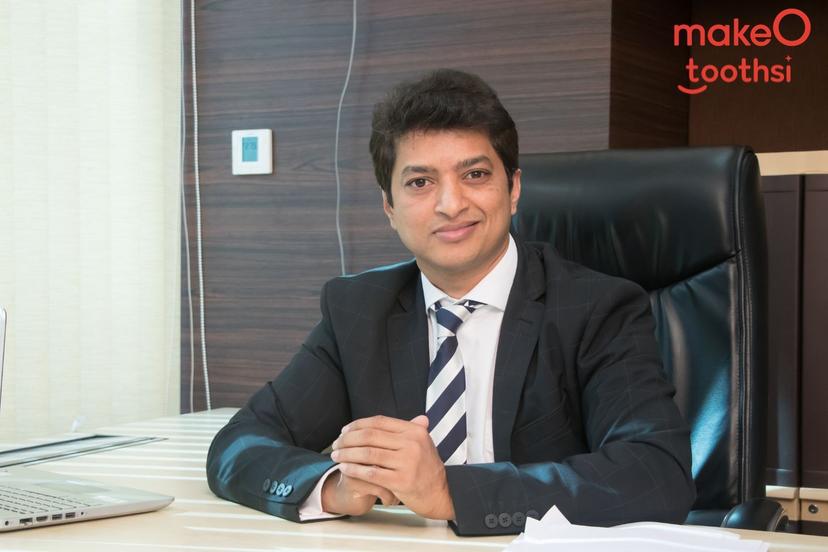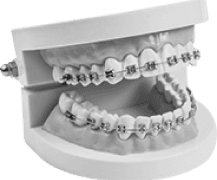MakeO blog
Before we take a deep dive into the concept of orthodontic headgear, let us first understand the concept of “Malocclusion”. Malocclusion is the condition where the upper and lower teeth of the patient do not fit together the way they should. There could be two possible scenarios in this condition. When the upper teeth rest way ahead of the lower teeth, it is called an “Overbite”. When the lower teeth rest in the front, the condition is called an “Underbite”.
There are multiple ways to fix malocclusion and orthodontic headgear is one of the most effective methods to do so.
What Is Orthodontic Headgear?
These headgear braces are different from normal metal braces for teeth. While normal braces correct the position of the teeth, headgear braces correct the position of the jaw using the skull as an anchor.
As the name suggests, dental headgear braces are worn partially on the head and partially inside the mouth. It has 5 simple parts that work together to fix your bite.
1. Head Cap
This part sits on the head of the patient and provides an anchorage for the rest of the apparatus. It can be placed on the base of the head or on top of the head depending on the goals the dentist and the patient want to achieve.
2. Fitting Straps
There could be one of several fitting straps attached to the headgear depending on the type of headgear.
3. Facebow
This is a U-shaped piece of metal that is placed inside the mouth. It is attached to the head cap with bands or tubes.
4. Elastic Bands and Hooks
The molar and other teeth are anchored to the headgear using elastic bands, hooks and tubes.
5. Forehead pad or a chin pad
When fixing an underbite, the head cap can be replaced with a forehead pad or a chin cup. A wireframe typically connects the forehead pad to the chin cup.
Types Of Dental Headgear
There are different types of dental headgear structures. Which one suits the patient best depends on the nature of their misaligned teeth and their goals. The types of headgear for teeth include:
- Cervical Pull
A cervical pull is highly effective in treating an overbite. Here the straps wrap behind the neck and there are braces inside the mouth.
- High Pull
This type of dental headgear is also used to fix an overbite. In this case, the straps are wrapped from the upper jaw to the front and back of the neck.
- Reverse Pull
A reverse pull fixes an underbite effectively. It uses elastic bands that attach to braces on the top teeth.
How To Use It?
A dental headgear will be installed and placed by an orthodontist. It needs to be worn for 12-14 hours a day minimum. It is important to understand that any apparatus that uses elastic pull to fix the alignment of the teeth needs to be worn for as long as possible. The more you wear it the faster your goals will be achieved. If the headgear for teeth is not worn enough, the progress that you may have achieved until now will also begin to backtrack.
Why Do You Need Headgear?
If you have a misaligned jaw or teeth overcrowding, a headgear can enhance the aesthetics of your face by correcting your profile. If a child experiences issues like malocclusion, it is advisable for them to opt for a corrective headgear to avoid jaw correction surgery in the future.
Cost Of Headgear
The price of an orthodontic headgear depends on the overall treatment plan, the difficulty and the timeframe of treatment. Headgear is usually merely a tool in the orthodontist's toolbox and should have little to no impact on the cost of total treatment.
In other words, the cost of modern headgear braces will depend on the charges of the orthodontist rather than the apparatus itself.
Headgear Alternatives
If you are looking for any alternatives to headgear for the teeth, then we have good news for you. There is a minimally invasive, virtually invisible alternative to orthodontic headgear. They are Clear Aligners by makeO toothsi!
There are 3 classes of malocclusion and clear aligners can help fix Class I and II. These aligners are just like a clear mouth tray custom-made for your teeth to help you fix malocclusion. They are absolutely pain-free, almost invisible and an effective alternative to headgear that anyone can wear easily and go about their day.
Conclusion
Your search for a method to fix your bite ends here! Ortho headgear has helped several people, especially children around the world fix their jaw alignment. You can visit your nearest orthodontist to know more about the type of headgear you will need. Or you can try our most convenient clear aligners by makeO toothsi to fix your bite.
Our team of professionals will visit your house and perform a 3-D scan of your teeth to make you a customised set of clear aligners. You can take a happy, pain-free and aesthetically pleasing path to better oral health with makeO toothsi by your side.
related categories
Related articles

Types of Braces: Removable vs Fixed Braces, Which is Right For You?

This Diwali, Smile Bright With makeO Teeth Whitening Kit

Dr. Pravin Shetty: Pioneer in Lingual Orthodontics & Innovative Smile Solutions
How do I Know I’m the Right Candidate for makeO toothsi Teeth Aligners?

